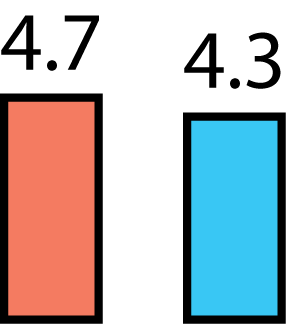5G networks are supposed to be fast, to provide higher data rates than ever before. While indoor experiments have demonstrated huge data rates in the past, this has been the year where the vendors are competing in setting new data rate records in real deployments.
Nokia achieved 4.7 Gbps in an unnamed carrier’s cellular network in the USA in May 2020. This was achieved by dual connectivity where a user device simultaneously used 800 MHz of mmWave spectrum in 5G and 40 MHz of 4G spectrum.

The data rate with the Nokia equipment was higher than the 4.3 Gbps that Ericsson demonstrated in February 2020, but they “only” used 800 MHz of mmWave spectrum. While there are no details on how the 4.7 Gbps was divided between the mmWave and LTE bands, it is likely that Ericsson and Nokia achieved roughly the same data rate over the mmWave bands. The main new aspect was rather the dual connectivity between 4G and 5G.
The high data rates in these experiments are enabled by the abundant spectrum, while the spectral efficiency is only 5.4 bps/Hz. This can be achieved by 64-QAM modulation and high-rate channel coding, a combination of modulation and coding that was available already in LTE. From a technology standpoint, I am more impressed by reports of 3.7 Gbps being achieved over only 100 MHz of bandwidth, because then the spectral efficiency is 37 bps/Hz. That can be achieved in conventional sub-6 GHz bands which have better coverage and, thus, a more consistent 5G service quality.

Hi, professor Bjornson.
I have a question.
When we define the area throughput in a cellular network, is the SE that exists in the relation related to downlink or uplink?
I think in a cellular network the uplink and downlink SEs are different.
Is it important to consider uplink SE or downlink SE in the definition of area throughput for a cellular network?
Both are important. There is one downlink area throughput and one uplink area throughput. The numbers are different since the uplink and downlink SE are different.
The downlink area throughput is typically more important when dimensioning the deployment since most of the traffic goes in the downlink.
Hello, Professor Bjornson.
According to the statement in your book, SDMA can improve sum SE in a cell and not per user SE.
I want to ask whether in the implementation of massive MIMO in 5G, the UEs utilize more bandwidth than 4G to improve just their SE?
Do you know how much bandwidth each user utilize in 4G and 5G? Is there any difference?
The answer depends on how much bandwidth the operator has and how the vendor has decided that to implement the resource allocation. These things are not standardized. But the general intention with 5G is that each user should be allocated more bandwidth so that the data rates can be increased.
Hello, Professor Bjornson.
In the definition of Area Throughput in your book, Are B,D, and SE related to the total cellular network or for coverage tier and hotspot tier are considered, separately?
They are considered separately. You can then add up the area throughputs of the two tiers to get the total area throughout of the areas that are covered by both tiers.
In spectral efficiency equation = (1+SNR or SINR) bits/sec/Hz, where modulation technique play a role to control it.
OR
just tell me that is it possible to control spectral efficiency by modulation technique? if so kindly suggest any literature and matlab code.
A channel has a maximum support spectral efficiency, called the channel capacity.
Each modulation-and-coding scheme has a certain spectral efficiency (number of bits per symbol * coding rate). Practical systems use adaptive modulation-and-coding, where we have a list of different possibilities and select the one that is closest but below the maximum supported spectral efficiency of the channel.
These are things that you can read about in many different textbooks, such as Fundamentals of Wireless Communications, Elements of Information Theory, Foundations of MIMO communication, etc.